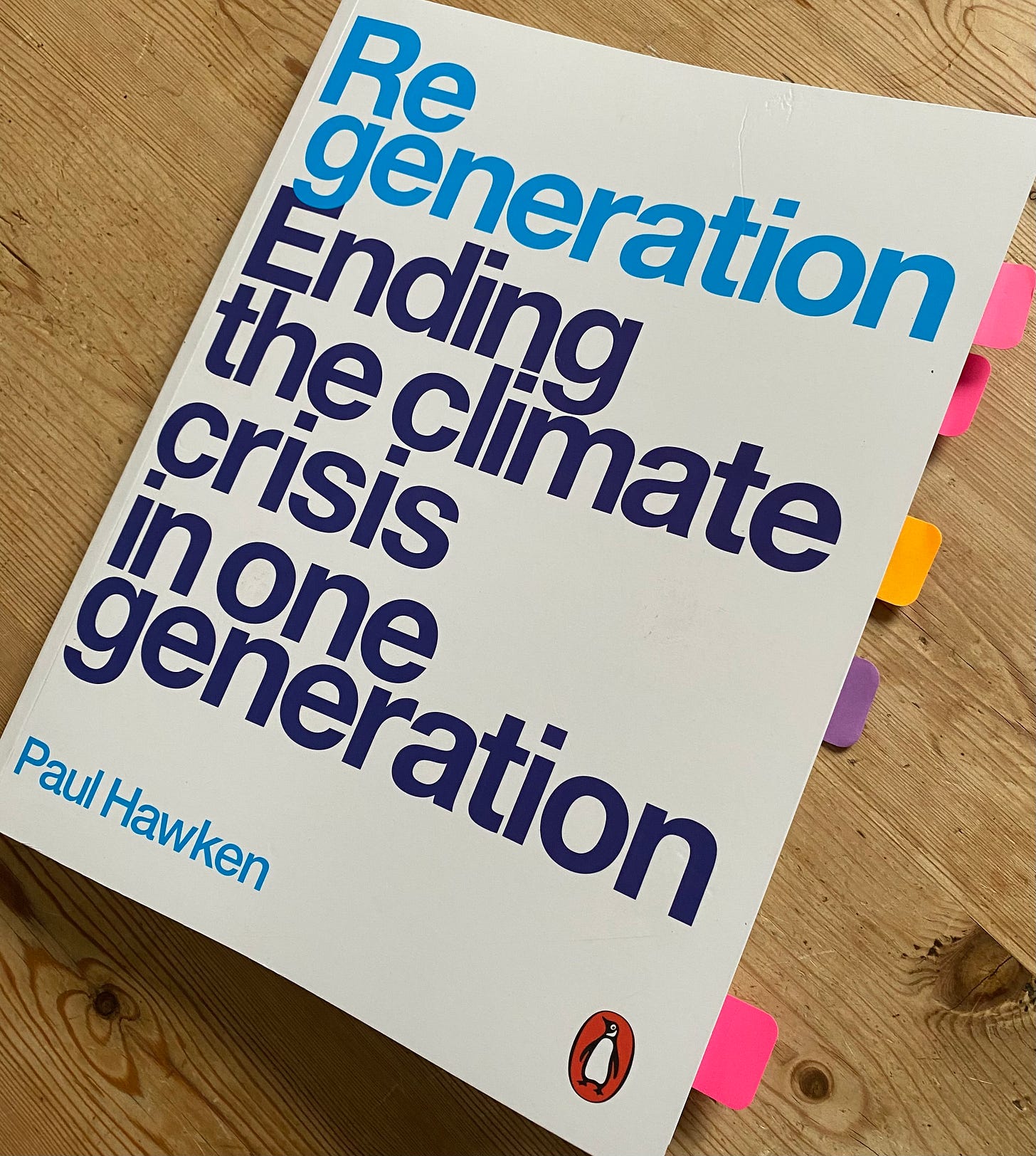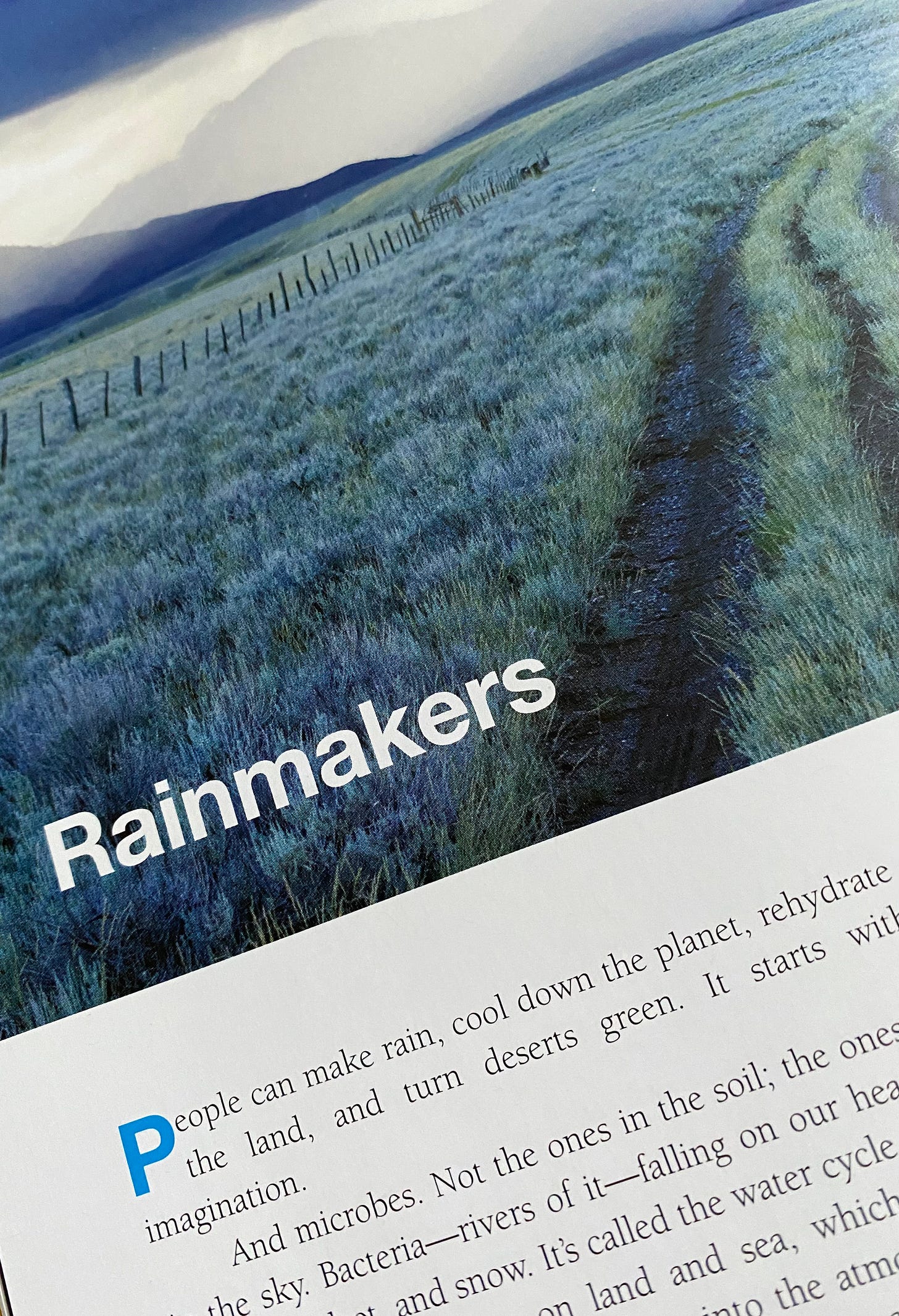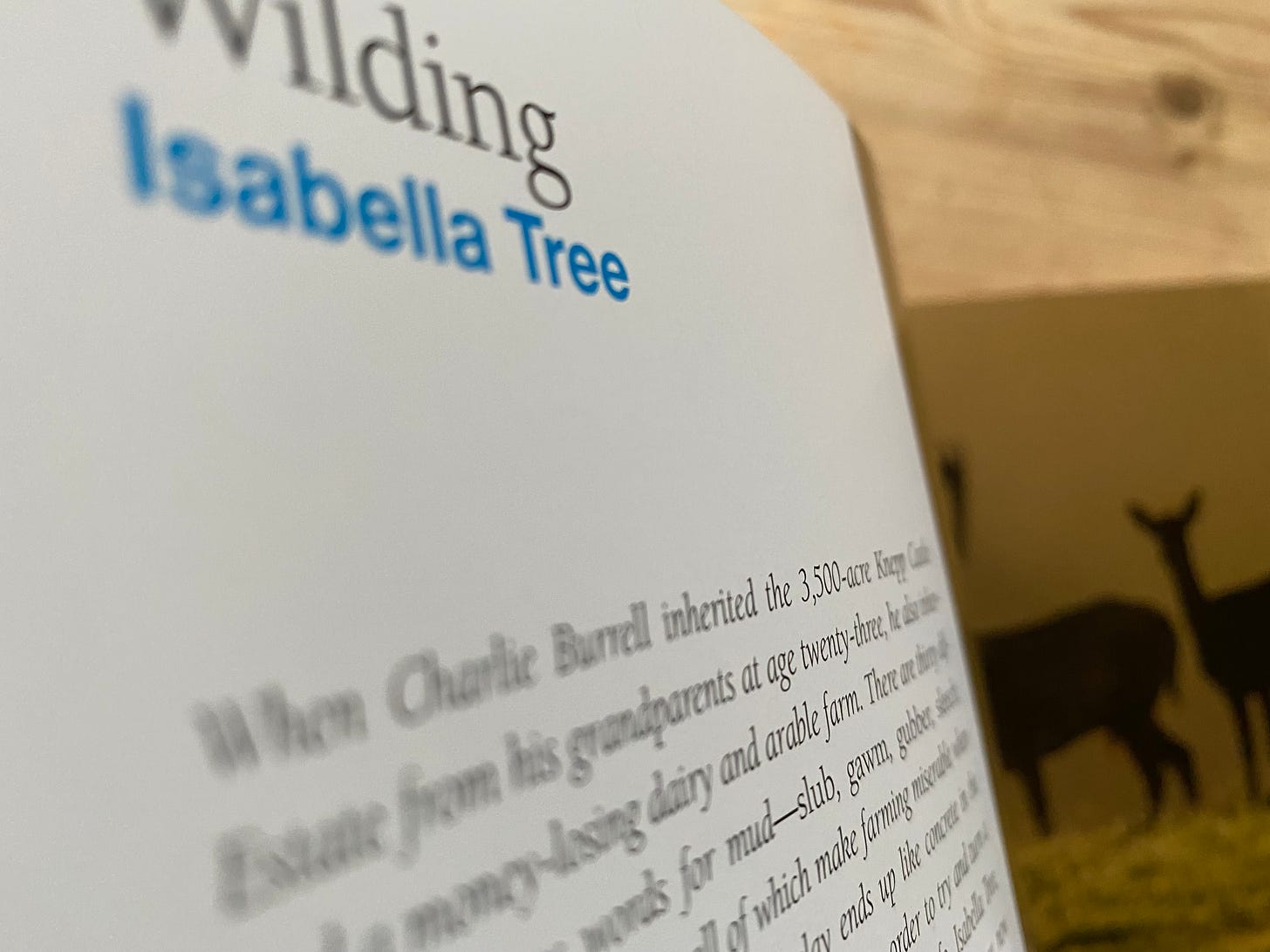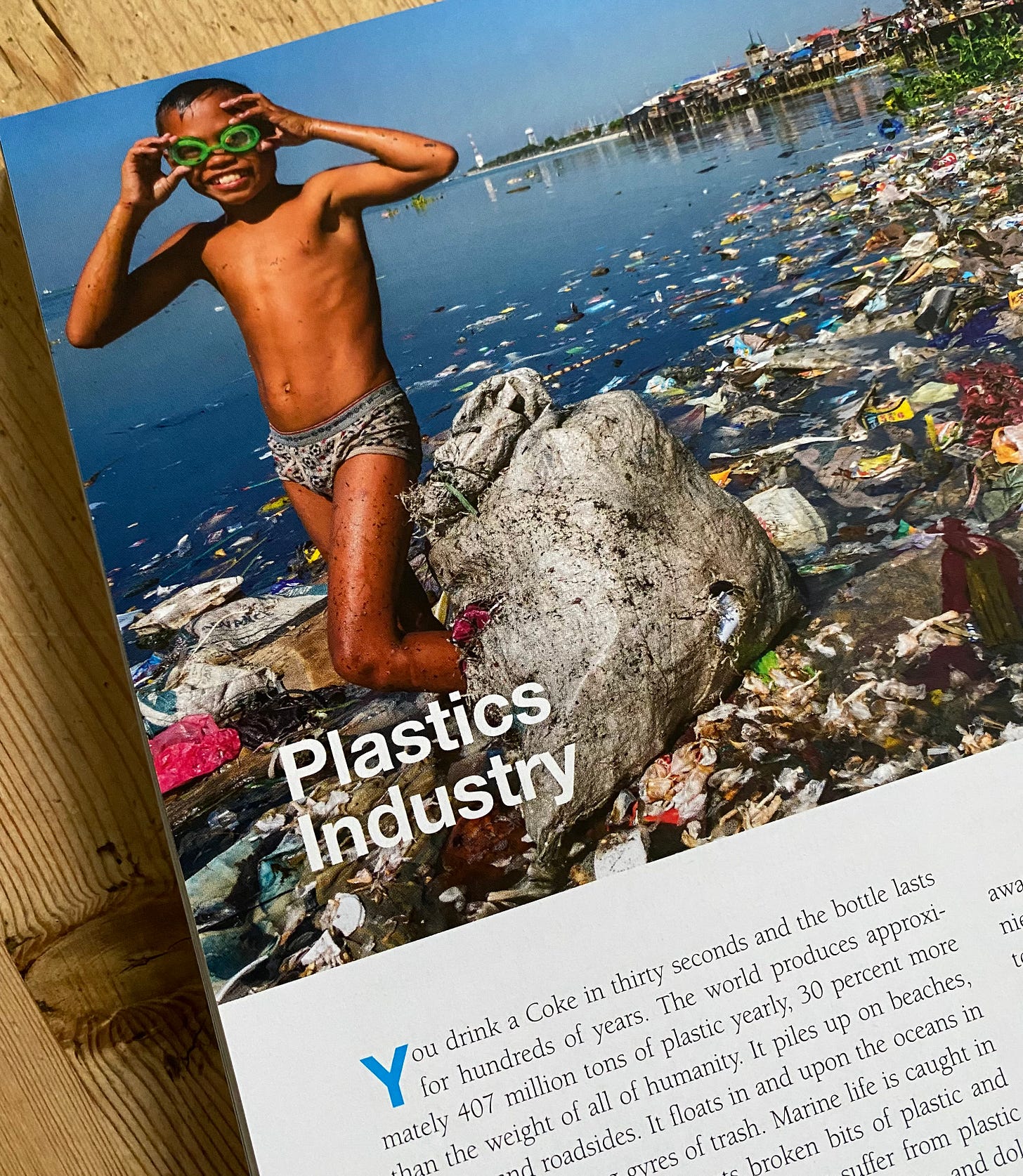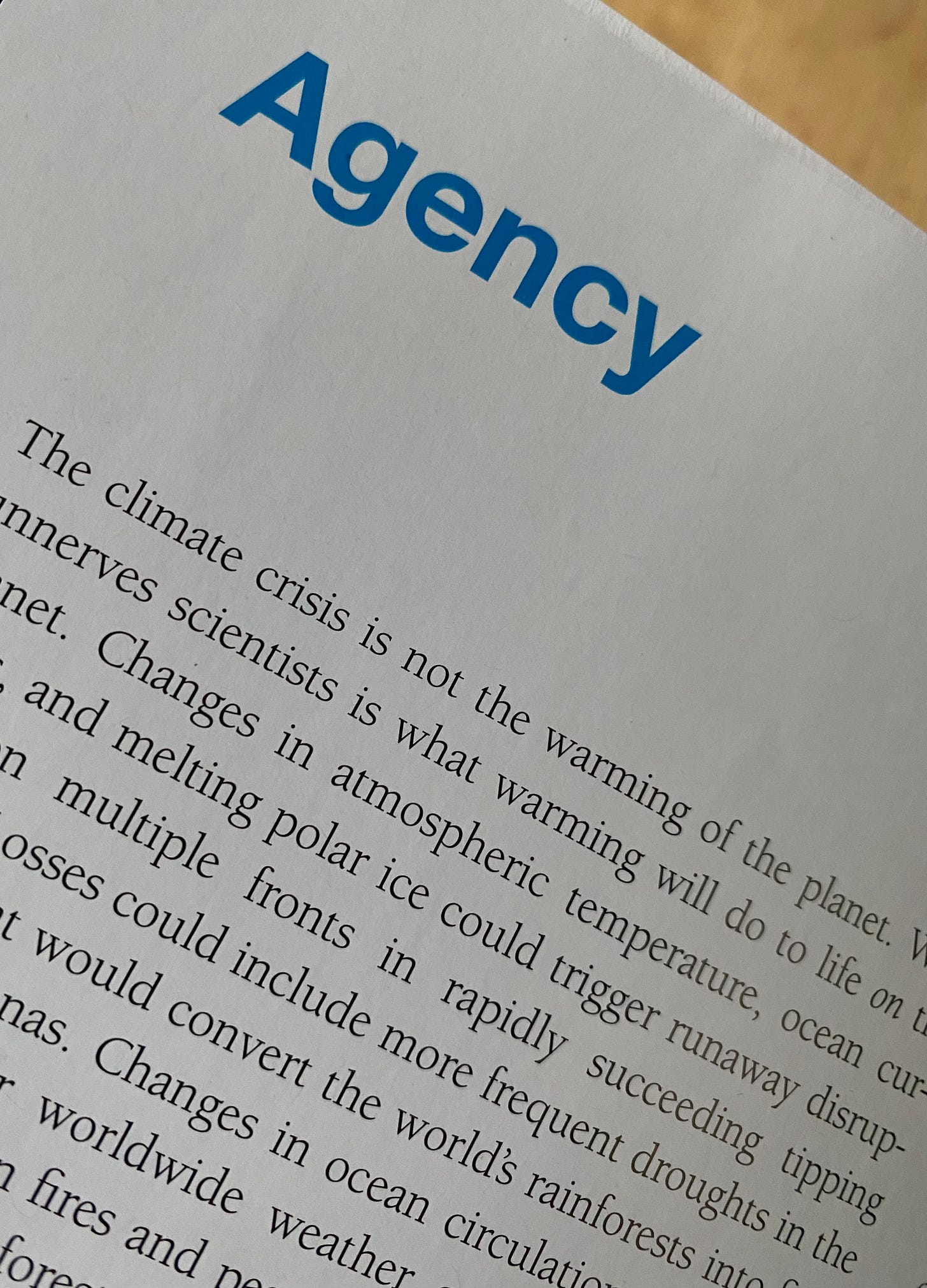I picked up a copy of Paul Hawken’s most recent book, ‘Regeneration, Ending the Climate Crisis in one Generation’ at the weekend and, although still exploring, digesting and reflecting, I realise this may be a pivotal moment in our progress towards a regenerative future. It is the same pivotal moment feeling I and many others felt when coming across Silent Spring, Sand County Almanac, Braiding Sweetgrass and the Living Building Challenge for the first time.
Regen Notes is a newsletter of regenerative news, stories and more, curated by Martin Brown. It is a companion to Zoom Regenerative events and podcasts where we join the regenerative dots, share the themes and work that invigorates, inspires and feeds our curiosity.
Regen Notes is 100% reader-funded. If you value independent regenerative curation and journalism, please consider supporting by becoming a paid subscriber.
This edition of Regen Notes is an initial review of ‘Regeneration, Ending the Climate Crisis in one Generation’
My initial approach to Regeneration was to scan, picking up headlines from the numerous chapters. There is no index or references (these are online), so the scan approach is a lucky dip, a kid in a sweetshop of goodies. Then it was back to reading as a book.
Throughout Regeneration, there are many comments, expressions and writings that will be familiar to those in the regenerative space, including those participating in zoom regenerative. However, many comments will stretch our understanding and some that will very much challenge our thinking.
If there is one principle that connects the daunting challenges and solutions proposed in Regeneration it is connection and reciprocity. Our connection with the natural world is broken.
Regeneration means putting life at the centre of every action and every decision.
Through the book are inspiring articles from key players in the world of climate or regenerative thinking. We open with Jane Goodall, close with John Elkington and read from Richard Powers, Isabella Tree, Charles Massy and many others along the way.
Regenerative Self
The most complex and radical climate technologies on Earth are the human heart, head and mind, not a solar panel.
Rather than a focus on technology, (as Hawken’s previous Carbon Drawdown), Regeneration focuses on how we approach the climate crisis, covering Oceans, Forests, Wilding, Land, People, City, Food, Energy and Industry.
The most common question about the climate crisis is, what should I do? How can a person or entity create the greatest impact on the climate emergency in the shortest time? Most people do not know what to do or believe the things they do are insufficient. We think otherwise.
Regeneration is inclusive and an effective strategy in comparison to fighting, combating or mitigating climate change. Regeneration creates builds and heals. Regeneration is what life has always done, we are life and that is our focus include how we live and what we do everywhere.
Agency
Agency is core in Regeneration, as it is in regenerative thinking, a Living Building Challenge imperative and key to zoom regenerative’s purpose.
Movements do not emerge from the top of institutions, they begin with one person and then another, the invisible space where commitment and action join and come together to become a dyad, a group, a team and then a movement.
To put it simply no one is coming to help us.
Regenerative Buildings
The section on Buildings focuses on the Living Building Challenge as the regenerative approach. This is an excellent fit with the book’s approach to reversing climate change, one that differs from other approaches being based on the idea of regeneration, not only on reducing impact. Hawken praises other approaches in getting us to where we are, but notes that most people remain disengaged and we need a way forward that engages the majority of humanity.
Buildings are where we spend most of our daily lives, yet our buildings are not designed for human or planetary well-being. Building materials are full of toxins, homes are designed for construction efficiency, not for supporting positive social dynamics, developers do not have the knowledge base experience or incentive to look at the long-term performance of the buildings they create.
Regenerative construction means looking at the ecological, social and health impact of every building aspect.
Onsets
Offsetting receives a welcomed critique, and whilst recognising it may have a role, the bottom line is clear, emissions must be reduced now, not in the future, near or far. Reductions must be real, substantial and immediate. We do not have time to waste. Hawkin suggests replacing offsets with onsets - activities by individuals, companies and nations that remove more carbon from the atmosphere than they release.
Action and Connection
The book concludes with Action and Connection. Where to Start is a checklist of questions to ask ourselves, our projects and our organisations. These are based on core questions: Is this activity extractive or regenerative? Does this action create more life or reduce life?
Are we healing the future or stealing the future?
Zoom Regenerative
We are joining regenerative dots, sharing themes and activities that invigorate, inspires and feeds curiosity.
Excited to announce that the next Zoom Regenerative is scheduled for the 19th October at 8pm UK, with our guest Jessie Buckmaster, Sustainability Manager at Hathaway Dinwiddie, sharing regenerative insights from Californian design and construction, and will include our unconference style discussion looking at COP26 through a regenerative lens.
November 16th COP 26 Reflections
December 14th with Rachel Sheila Kan. Regenerative Fashion
or




